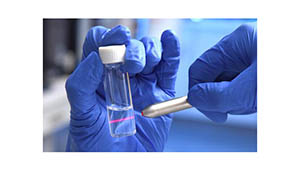
Researchers from the University of Texas Southwestern Medical Center have developed a nanoparticle vaccine immunotherapy that fights multiple cancer types, according to a preclinical study published in Nature Nanotechnology.
The nanovaccine, which the team calls a 1st of its kind, is made up of tumor antigens inside of a synthetic polymer nanoparticle.
“What is unique about our design is the simplicity of the single-polymer composition that can precisely deliver tumor antigens to immune cells while stimulating innate immunity. These actions result in safe and robust production of tumor-specific T cells that kill cancer cells,” co-lead author Jinming Gao said in prepared remarks.
The newly published study demonstrated that the nanovaccine was effective in multiple tumor types in mice.
“For nanoparticle vaccines to work, they must deliver antigens to proper cellular compartments within specialized immune cells called antigen-presenting cells and stimulate innate immunity,” co-lead author Zhijian Chen said. “Our nanovaccine did all of those things.”
The nanovaccine activates an adaptor protein called STING, which triggers the body’s immune system to fight off cancer. The team applied their experimental vaccine to melanoma, colorectal cancer, and HPV-related cancers of the cervix, head, neck and anogenital regions of mice. They reported that in most cases, the nanovaccine slowed tumor growth and extended survival.
“Recent advances in understanding innate and adaptive immunity have also led to more collaborations between immunologists and nanotechnologists,” said Dr. Chen. “These partnerships are critical in propelling the rapid development of new generations of nanovaccines.”
The team said they are now focused on clinical testing of the STING-activating nanovaccines for an array of cancer indications, as well as potentially combining it with radiation or checkpoint inhibition.

